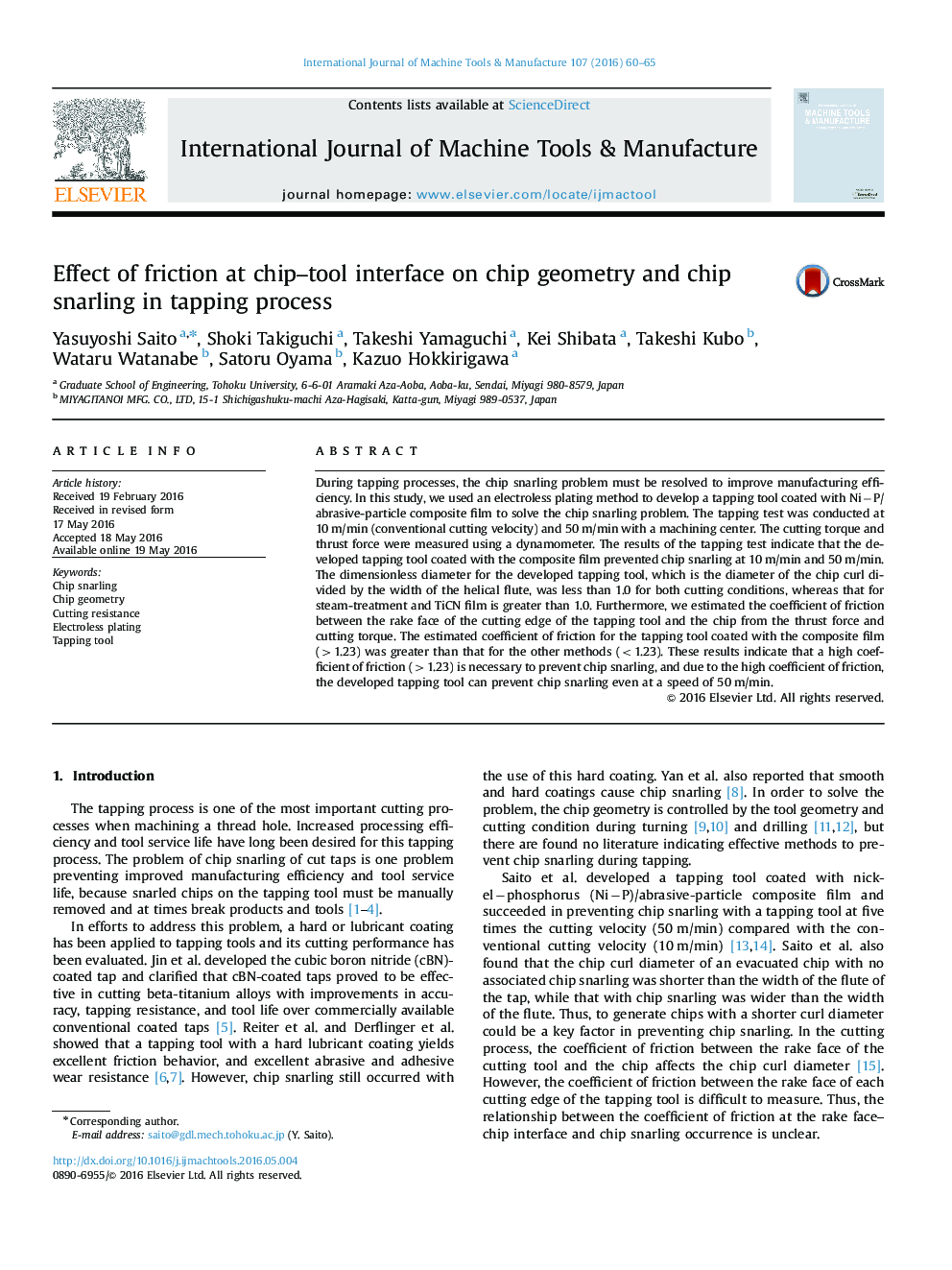| Article ID | Journal | Published Year | Pages | File Type |
|---|---|---|---|---|
| 781355 | International Journal of Machine Tools and Manufacture | 2016 | 6 Pages |
•Coefficient of friction at chip–tool was estimated using measured force components.•The estimated friction for the developed tapping tool was higher than that for the others.•The diameter of chip curl was less than the width of helical flute when chip snarling was not occurred.•The diameter of chip curl decreased with increase of the coefficient of friction at chip–tool.•Increase of friction at chip–tool is effective in preventing chip snarling during tapping.
During tapping processes, the chip snarling problem must be resolved to improve manufacturing efficiency. In this study, we used an electroless plating method to develop a tapping tool coated with Ni−P/abrasive-particle composite film to solve the chip snarling problem. The tapping test was conducted at 10 m/min (conventional cutting velocity) and 50 m/min with a machining center. The cutting torque and thrust force were measured using a dynamometer. The results of the tapping test indicate that the developed tapping tool coated with the composite film prevented chip snarling at 10 m/min and 50 m/min. The dimensionless diameter for the developed tapping tool, which is the diameter of the chip curl divided by the width of the helical flute, was less than 1.0 for both cutting conditions, whereas that for steam-treatment and TiCN film is greater than 1.0. Furthermore, we estimated the coefficient of friction between the rake face of the cutting edge of the tapping tool and the chip from the thrust force and cutting torque. The estimated coefficient of friction for the tapping tool coated with the composite film (>1.23) was greater than that for the other methods (<1.23). These results indicate that a high coefficient of friction (>1.23) is necessary to prevent chip snarling, and due to the high coefficient of friction, the developed tapping tool can prevent chip snarling even at a speed of 50 m/min.
